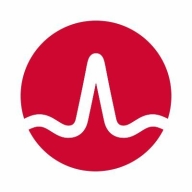

Symantec Siteminder and IBM Security Verify Access are two leading identity and access management solutions. Based on user reviews, IBM Security Verify Access offers superior features, ease of deployment, and customer service, making it a preferred choice despite potentially higher costs.
Features: Symantec Siteminder has robust authentication mechanisms, customization capabilities, and reliable access management. IBM Security Verify Access offers comprehensive security features, extensive platform compatibility, and advanced integration options.
Room for Improvement: Symantec Siteminder needs a more intuitive configuration process, better documentation, and improved user experience. IBM Security Verify Access requires performance enhancements, a streamlined administration interface, and increased scalability.
Ease of Deployment and Customer Service: Symantec Siteminder has mixed reviews on deployment with some initial setup challenges but satisfactory ongoing support. IBM Security Verify Access generally has a smoother deployment process and commendable responsive customer service.
Pricing and ROI: Symantec Siteminder has more affordable initial setup costs but mixed feedback on long-term ROI. IBM Security Verify Access, potentially more expensive initially, delivers better ROI through extensive features and reliability.
| Product | Market Share (%) |
|---|---|
| Symantec Siteminder | 2.5% |
| IBM Security Verify Access | 2.6% |
| Other | 94.9% |


| Company Size | Count |
|---|---|
| Small Business | 3 |
| Midsize Enterprise | 1 |
| Large Enterprise | 5 |
| Company Size | Count |
|---|---|
| Small Business | 8 |
| Midsize Enterprise | 3 |
| Large Enterprise | 69 |
IBM Security Verify Access is a complete authorization and network security policy management solution. It provides end-to-end protection of resources over geographically dispersed intranets and extranets.Provides a wide range of built-in authenticators and supports external authenticators.Provides permit and deny decisions for protected resources requests in the secure domain through the authorization API.Manages secure access to private internal network-based resources by using the public Internet's broad connectivity and ease of use with a corporate firewall system.
Symantec® SiteMinder is designed to secure the modern enterprise through a unified access management platform that applies the appropriate authentication mechanism to positively identify users; provides single sign-on and identity federation for seamless access to any application; enforces granular security policies to stop unauthorized access to sensitive resources; and monitors and manages the entire user session to prevent session hijacking. Finally, Symantec SiteMinder is battle-tested and has been deployed in the largest IT environments in the world.
We monitor all Single Sign-On (SSO) reviews to prevent fraudulent reviews and keep review quality high. We do not post reviews by company employees or direct competitors. We validate each review for authenticity via cross-reference with LinkedIn, and personal follow-up with the reviewer when necessary.